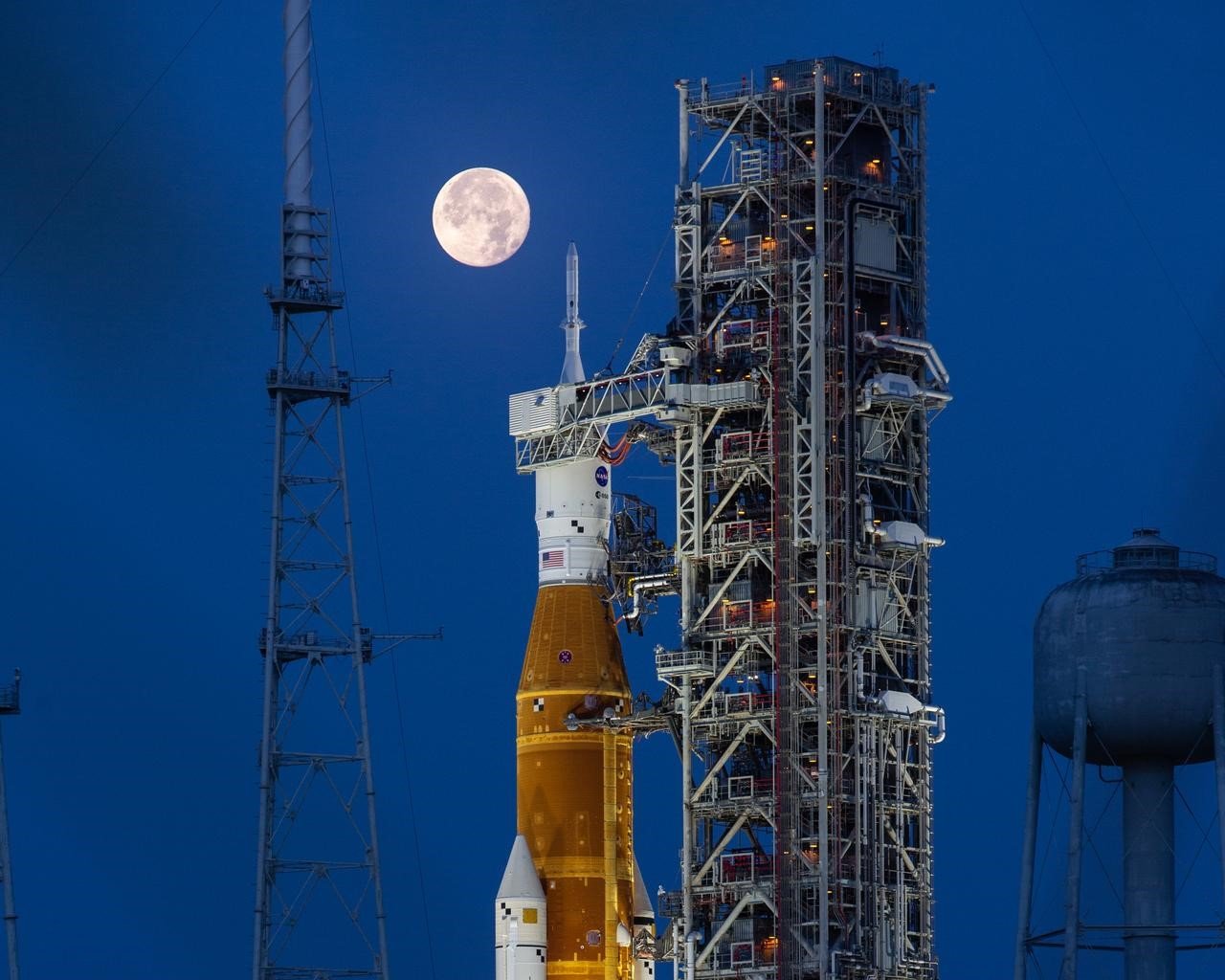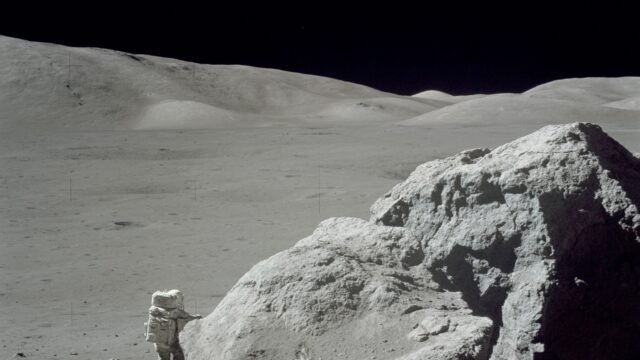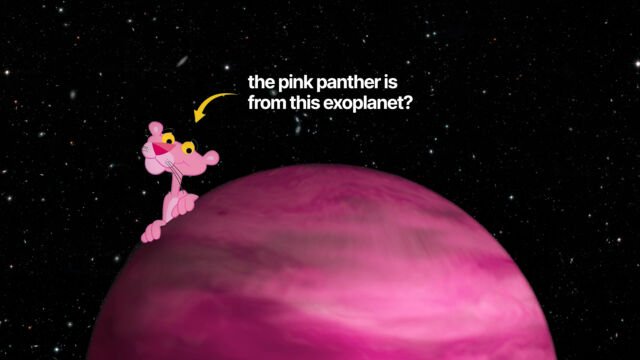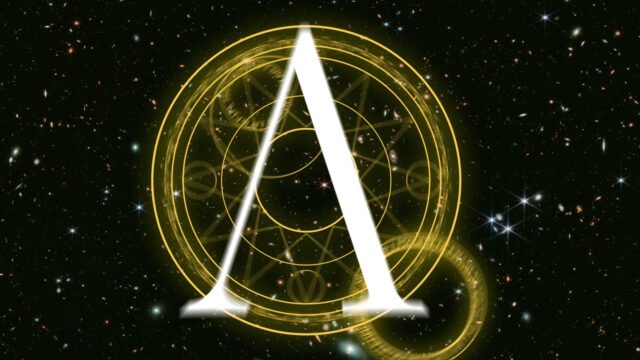“Discover the force of the skies O Men: once recognized it can be put to use.”
Johannes Kepler, German Polymath
The Apollo Program was one of the most ambitious and biggest ventures of humanity to date.
Trespassing all bounds of mankind, humans stepped on the moon for the first time in history on 21st July 1969, as a part of Apollo 11.
Ever since the end of the Apollo Program, nobody has ever gone back to the moon.
But soon things are going to change as NASA bids another quest to the moon and back with its Artemis program.
NASA is again going for another Apollo mission, but “something” different this time.
They’re not going to the moon for a trip, but to stay.
Artemis program was started in 2017 and since then, it has worked on building the super-heavy rocket to fulfill the mission and various other technologies which will help to sustain human life on Moon for longer durations.

Despite delays in decision-making and execution, Artemis remains to be an extremely ambitious mission.
NASA has already sent dozens of humans to the moon during its Apollo program back in the 70s to 80s, but Artemis is going to be different, for it has much more scientific value than Apollo.
Fact: The Artemis mission will send the first woman and first man of color to the moon.
Before exploring more details about the Artemis program, let us first understand the history of past lunar exploratory missions leading us to how the Artemis program took shape.
Apollo Program – Man’s First Step on the Moon
The Apollo program was NASA’s first attempt to send humans to the moon.
Since no other country had ever done it before, it was the most challenging mission that the organization (or say humanity) had ever faced.
Having started in 1961, the mission lasted for 11 years before coming to an end in 1972.
After the end of the second world war, the US and USSR engaged in a cold war.
The war was but a struggle to gain geopolitical superiority.
Both countries were trying to gain superiority over one another in every field, from military power to technological development.
Soon, space became the new frontier for the heated rivalry as both countries started to ramp up their space operations and develop new technologies and rockets to send more humans to space.
Fact: On 12th April 1961, Soviet pilot Yuri Gagarin became the first man to go to space.
Since USSR had already sent the first satellite and first man to space, the US had to do something different and bigger to dethrone the fast-growing Russian space program.
What (then) US president John F. Kennedy saw as pleasing was to send humans to the moon.
Shortly after i.e. on 25th May 1961, John F. Kennedy announced to put the first man on the moon in his famous “special message to congress on urgent national needs.”
This is how the Apollo mission was put into inception, all inspired by political will.
NASA had received billions of dollars of funds to make this happen.
The entire Apollo program costs about $25.4 billion, which would approximately be worth $158 billion today, taking inflation.
A total of 12 crewed missions were designated during the Apollo program.
Fact: The first crewed mission of Apollo’s program failed when the fire in the command module, during launch, causing the death of all three astronauts in it.
The first successful landing was made by Apollo 11 with the command module “Colombia” and landing module “Eagle”.
Neil Alden Armstrong became the first man to step on the moon alongside Edwin Buzz Aldrin who became the second; not that they need an introduction.
Apollo 17 marked the end of Apollo’s program when it landed back on 19th December 1972.
Eugene Cernan, Ronald Evans, and Harrison Schmitt were the last Apollo astronauts to fly.
By that time, Apollo’s program had established its legacy over the world.
It led to scientific and engineering development that was never seen before and also impacted our day-to-day life.
It contributed to the development of modern solar panels, fireproof material (which is still used by firefighters), heart monitors, digital imaging cordless power tools, and much more.
In the end, the US was not only able to take over USSR’s space program but also had a cultural impact all over the world.
NASA had established itself as the undisputed kingpin of the space race.
Ever since then, no one has been able to touch that milestone again.
The golden age of NASA brought by the Apollo program was an anomaly in the national decision-making process.
It wouldn’t have taken place had the greed for political power not been in the picture.
Fast forward to 2022, and things have changed a lot, the space sector today is not subjected to political will.
NASA has learned that space exploration is, after all, not so cheap and hence, must be done with a strong motivation to establish a continuous presence in space, not just a trip.
With this in mind, NASA launched its Artemis program, which would not only focus on sending astronauts to the moon again but also to make proper arrangements for their stay.
Constellation Program – “Almost” Returning To The Moon
Before the launch of the Artemis program, the Constellation program was launched in 2005.
Its main aim was to get humans back to the moon and ultimately to Mars.

The constellation program had many components such as the development of a new super-heavy launch vehicle called Ares V and a rocket to launch humans into space called Ares I along with the Orion Spacecraft.
It also included the development of Altair, the main transport vehicle for astronauts on the lunar surface, which works the same as its predecessor – the Apollo Landing Module.

The constellation program was necessary for NASA because:
- NASA’s Space Shuttle program was about to end. Thus, there was a need for new launch vehicles and spacecraft to launch humans into space.
- NASA needed a new space program to continue its crew space exploration after the decommissioning of the ISS in near future.
- To establish an extended human presence on the moon.
- To begin a sustainable course of long-term space exploration.
- To test new technologies and techniques that would serve future space exploration, which included harvesting lunar soil for rocket fuel and breathable air.
Cancellation of Constellation Program
The constellation program was meant to be an ambitious mission that not only promised the continued presence of humans on the moon but also a voyage to the red planet Mars.
But when then US president Barack Obama occupied the American throne, he formed the Augustine committee to look after the necessities of the Constellation program.
The committee declared the Constellation program to be over-budget, behind schedule and lacking in innovation.
It was realized and concluded that the Constellation program was beyond the grasp of NASA’s feasibility.
Other than that, many components of the Constellation program were similar to those of the Apollo program and hence, did not seem to be worth it.
Due to these concerns, the Constellation program was canceled in 2010.
In a new proposal from the committee, NASA was directed to continue to work on Orion Spacecraft and the development of the Space Launch System – a new super-heavy launch vehicle that would fill in the footsteps of the retired Space Shuttle Program.
Let’s go back to the Moon and further
In 2017, when President Donald Trump took the office, he re-established National Space Council which was disbanded back in 1993.
The Trump administration laid more focus on commercial programs, and the development of SLS, and Orion Spacecraft while compromising Earth science research and eliminating NASA’s education office.

Later on, the Trump administration brought a new space policy called Space Policy Directive 1, which provided an integrated program with private sector partners to send humans back to the moon.
It also included partnerships with other countries.
The directive I am signing today will refocus America’s space program on human exploration and discovery. It marks the first step in returning American astronauts to the Moon for the first time since 1972, for long-term exploration and use. This time, we will not only plant our flag and leave our footprints — we will establish a foundation for an eventual mission to Mars, and perhaps someday, to many worlds beyond.
President Donald Trump
The main aim of the policy was to lead an innovative and sustainable program for long-term space exploration along with commercial and international partners.
The policy focused on space explorations and moon missions that would re-defy mankind’s limits.
Beginning of Artemis Program – Apollo’s “Twin Sister”
In 2019, all such activities planned to propel humanity onto the moon were undertaken in a program named “Artemis”.
In Greek mythology, Artemis, the goddess of the moon, is the twin sister of Apollo – the Sun god.
Hence, the new space program was named Artemis, whose primary motive was to explore the moon’s south pole region.
However, it wasn’t the late phase of the last decade that kicked off Artemis in its entirety. It is a program that NASA had been working on for quite some time.
Back in 2014, the Orion Capsule was tested in Exploration Test-1.
It was launched aboard the Delta IV Heavy Rocket from the Space Launch Complex at Cape Canaveral.
It was a 4.5-hour-long trip orbiting around the Earth twice, before re-entering Earth’s atmosphere.
Between 2015 and 2017, NASA tested its RS-25 engines, which are to be used in the SLS.
The core stage was fully developed by December 2019 and in June 2021, NASA announced the conclusion of assembling the first SLS rocket.
NASA has already started working on SLS for the second and third Artemis missions, which might launch in 2024 and 2025.
Now that we have come to it, let us discuss the Artemis Program and the associated missions.
Artemis Program – Vision & Features
Since its start in 2017, the Artemis Program has been working on building a super-heavy rocket to fulfill the mission of taking humans back to the moon alongside various other technologies, which will help to sustain human life on the moon for longer durations.
Initially, the deadline for the first crewed mission under the Artemis program was set to be 2024, but it has now been extended due to a lack of technical feasibility.
Although the first uncrewed mission is set to launch in a few days from now i.e. on 3rd September 2022 (after its postponement), humans wouldn’t step on the moon anytime earlier than 2025.
This delay was caused by the combined efforts of the COVID pandemic and the Blue Origin Lawsuit, which will be discussed later in this article.
Despite the delays, the Artemis is still a very ambitious mission.
NASA has already sent dozens of humans to the moon during its Apollo program back in the 70s and the early 80s.
However, as mentioned before, the Artemis mission is very different from the Apollo mission as the former has much more scientific and technical value than the latter.
Artemis Mission Spacecraft
NASA is currently developing spacecraft and launch vehicles to facilitate the lunar expedition.
The Artemis Program demands state-of-art equipment and machinery which would not just facilitate space exploratory missions but would also be crucial for mankind’s next big step.
Space Launch System (SLS)
The Space Launch System (SLS) is an important part of the Artemis program.
It is a Super-Heavy Launch Vehicle that will not only carry humans as well as cargo to the moon.
The 365-feet-tall rocket is a replacement for the Ares V, which was canceled along with the Constellation program.
SLS is going to be crucial for not only the Artemis program but other deep space exploration missions as well.
SLS will launch the Orion spacecraft into space, which will carry humans to lunar orbit, the system will be developed in various stages.
The first stage of development of SLS is Block 1, which would have a payload capacity of 95 tons (to the lower earth orbit).
Block 1B (the next stage) will have an improved upper stage that would increase its payload capacity to 105 tons.
The final stage of development would be Block 2, which will have advanced boosters that would boost its payload capacity to 130 tons.

The core stage of the rocket is powered by four RS-25 engines, which also powered the Space Shuttle.
Even the solid rocket boosters used in SLS are the same (just a bit taller) as those used in Space Shuttle.
SLS has used many recycled components from the Space Shuttle Program, but with modern technology.
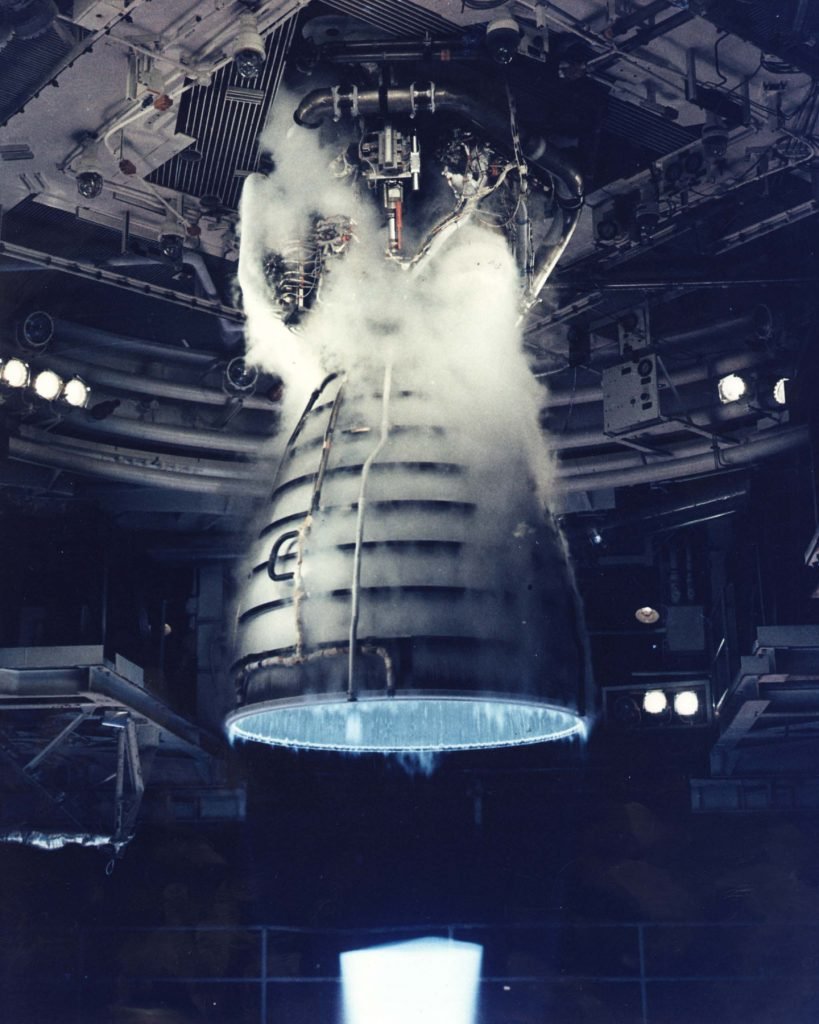
The upper stage of SLS is Interim Cryogenic Propulsion Stage (ICPS), powered by an RL10 engine which is also currently being used in Atlas V Centaur and Delta Cryogenic Second Stage.
Initially, the Artemis missions will use ICPS as the second stage in SLS Block 1.
Later it would be replaced by Exploration Upper Stage (EUS), which will improve the payload capacity in SLS Block 1B and Block 2. EUS will use the improved version of the RL10 engine.
SLS has also faced criticism, mainly due to the high cost of development.
As of 2021, around $23 billion had been spent on the development of SLS.
Further, each launch of SLS is estimated to be worth $2 billion.
This high price tag comes despite NASA using components from the Space Shuttle.
This makes SLS somewhat less competitive and innovative in the market.
Starship, developed by SpaceX, for instance, is another gigantic rocket the size of the SLS with a similar payload capacity.
It is, however, going to be reusable which will bring down its launch cost to a very low price (relatively at least).
Elon Musk, Founder and CEO of SpaceX, even claims that he will try to bring down the launch cost to $2 million.
We need not tell you the difference between $2 million and $2 billion, do we?
Orion Spacecraft

The Orion Spacecraft is another significant arrow in the quiver of the Artemis Program that NASA is working on.
Orion is designed to carry astronauts into lunar orbit, from where they would be set to put their feet on the moon.
NASA contracted Lockheed Martin to develop the Orion Spacecraft. It can support four astronauts for 21 days without any external support.
The Orion Crew Module will be bigger and roomier than its predecessor – the Apollo Command Module.
It has a diameter of 5 meters and is 3 meters in length.
Since the Artemis program will also send the first woman to the moon, the Orion Crew Module has been built in a way that would be compatible with both men and women.
Orion will also use sophisticated displays and controls operated through advanced software.
They have tried to reduce the number of switches on the command panel.
Learning from the Apollo accidents, electronic procedures are programmed in a way that emergency procedures can be executed easily saving the time and life of astronauts.
The service module of the Orion spacecraft is developed by the European Space Agency (ESA) and manufactured by Airbus Defence and Space in Germany.
Till now, about $21 billion have been spent on the development of Orion, including inflation.
Both Orion and SLS are crucial parts of the program, but we also need a lander to land humans on the lunar surface.
For that NASA turned to private companies to reduce the mission cost.
Human Landing System
In April 2020, NASA awarded funding to Blue Origin, Dynetics, and SpaceX for designing their Human Landing System (HLS) in 10 months.
A year later, NASA contracted SpaceX to develop HLS using their Starship, which they are already working on.
According to the contract, SpaceX has to develop, manufacture, and fly at least two lunar landings with Starship HLS.
This contract came with resistance from Blue Origin and Dynetics.
Blue Origin sued NASA over the contract but the suit was dismissed and NASA continued to work with SpaceX.

So, till now, the plan is to launch astronauts onboard Space Launch System, send them to lunar orbit via Orion Spacecraft, and then land them on the lunar surface with Starship HLS, before returning to the Orion.
After that, astronauts would be set on a return journey and the Orion Capsule will bring them back.
Lunar Gateway – Space Station on Moon
Artemis program is not just about sending humans back to the moon, it is also about setting an extended human presence on the moon.
So what is NASA planning to make humans stay on the moon?
One of the very obvious ways is to set up a lunar base, which brings us to another element of the Artemis Program – the Lunar Gateway.

Lunar Gateway is a small space station that would orbit the moon and serve as the platform for supporting lunar and deep space exploration.
Its main motive is to support NASA’s deep space exploration plans.
It would also have a space laboratory which would help in studying planetary science, heliophysics, space biology, and human health.
Lunar Gateway would also serve as a staging point for NASA’s future mission to Mars.
It is a multinational collaborative project supported by the European Space Agency (ESA), the Japanese Aerospace Exploration Agency (JAXA), and the Canadian Space Agency (CSA) along with NASA.
The gateway is planned to be deployed in a highly elliptical orbit with an orbital period of 7 days.
Most of the lunar parts would be accessible from the gateway station for human and robotic expeditions.
NASA would contribute the two first elements of the gateway – the Power and Propulsion Element (PPE) and the Habitation and Logistics Outpost (HALO).
NASA is collaborating with Maxar Technologies for the development of PPE.
It would be powered by an electric propulsion system and would generate 60 kilowatts of electrical energy.
PPE would also provide communication, attitude control, and orbital transfer capabilities.
On the other hand, the Habitation and Logistics Outpost (HALO) would be the place where astronauts would live and conduct research initially.
ESA would provide a habitation named I-HAB and refueling modules, which will enhance the life support systems, crew living quarters, and scientific research.
They would also provide a lunar communication system to the gateway.
CSA would be contributing to robotic interfaces for the gateway most notable of which would be the Canadarm 3 – a next-generation robotic arm.
It would move in all directions accessing each part of the gateway externally.
JAXA would contribute to the environment control, life support, batteries, and thermal control for the gateway.
These components would be installed on I-HAB before launch. Gateway would experience both crewed and uncrewed time periods, so it is crucial to have such capabilities for complex missions.
Construction of the gateway would start in November 2024 with the launch of PPE and HALO.
NASA has acquired SpaceX’s Falcon Heavy for the mission. In 2025, the first astronauts would arrive at the Lunar Gateway under the Artemis 3 mission.
Later in 2026, the I-HAB Module would arrive at the gateway for its expansion.
CLPS and VIPER
SLS, Orion, and the Lunar Gateway are the three main components of the Artemis Program.
However, the program includes some robotic exploration missions and commercial programs.
Those programs are Commercial Lunar Payload Services and VIPER mission.

The CLPS program was initiated by NASA in 2018 to send small robotic landers to the south pole region to explore the lunar resources, feasibility testing, and lunar science to support the crewed mission in the region.
As the name suggests, the landers would be provided by commercial firms.
In May 2019, NASA contracted three companies for the lander: Astrobiotic Technology, Intuitive Machines, and OrbitBeyond.
These Landers would carry the scientific payloads from NASA and other industries and universities, which includes scientific investigations and technology demonstrations.
VIPER (Volatiles Investigating Polar Exploration Rover) is a lunar rover developed by NASA that would be delivered to the moon’s south pole by 2024.
It would map the distribution of water ice in the permanently shadowed areas of the south pole region.
Both the launching and landing of the rover would be done by private companies.
Artemis’ Lunar Base Camp – Colonizing Moon
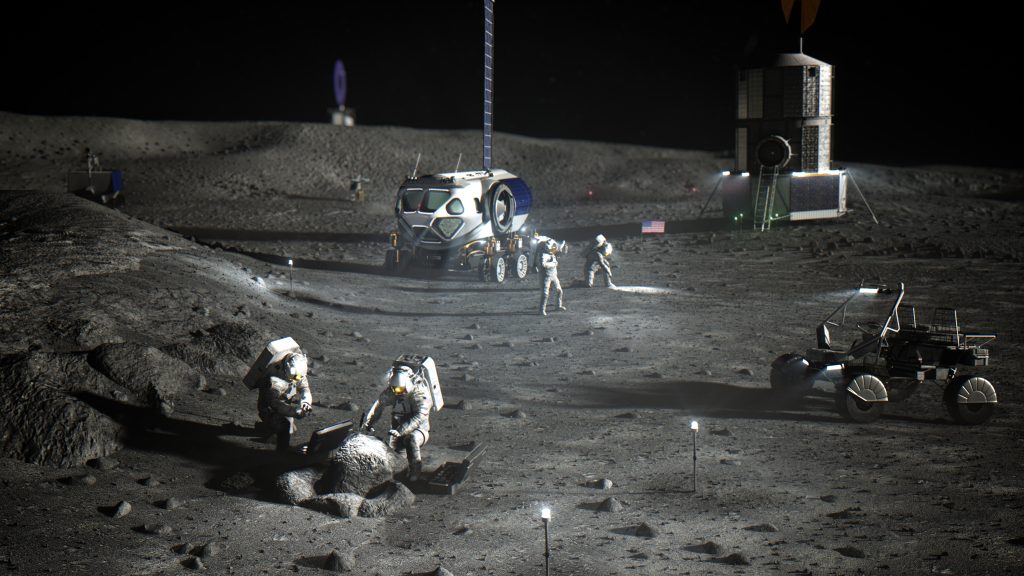
NASA has also proposed the Artemis Base Camp for permanent human settlement of humans on the lunar surface.
The south pole is considered to be the best candidate for the location of the base camp.
Scientists have already confirmed the presence of water at the lunar south pole.
The south pole has many craters spread across the region.
This region gets consistent sunlight all the time, especially on the rims of craters.
Since barely any sunlight reaches the depth of these craters, the temperature at the bottom of the crater can dip to about -235℃.
Due to the low temperatures inside the crater, water is trapped inside in the form of ice.
This makes the south pole a decent spot for humanitarian settlement.
Ice can solve the problem of water, breathable air, and fuel. Since the region also gets constant sunlight over time, there is no hassle for a consistent power supply.
“It’s such a dramatic terrain down there,”
W. Brent Garry, Geologist at Goddard Space Flight, NASA
The base camp would include a modern lunar cabin, a rover, a Lunar Terrain Vehicle (LTV), and even a mobile home.
NASA aims to develop the base camp for at least a two-month stay.
NASA is inviting design ideas for habitats, power generation, and LTV from commercial firms already.
Companies like Teledyne, Sierra Space, and Nissan have sent their design for the LTV.
NASA is also working with JAXA and Toyota to build a rover with living space, which is expected to be launched by 2029.
It would be similar to a pressurized RV (Recreational Vehicle) with enough room to board 2 people for up to 14 days.
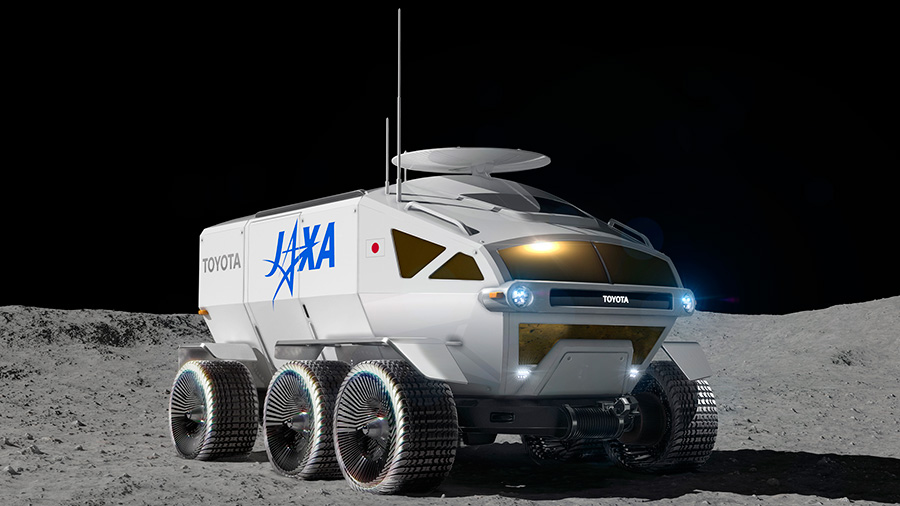
The Lunar Base would also play an important role in future human missions to Mars.
Since the gravitational acceleration (or gravity, in simple words) on the moon is very weak to that of Earth, launching rockets and spacecraft from the moon would be quite easy, relatively.
Even the water on the moon can be broken down into hydrogen and oxygen, which can power the rocket for launch.
Although the lunar base sounds extremely promising, it would take a lot of time to be finalized and set up.
A permanent base on the moon would require immense technological developments.
After all, settling on anywhere but Earth is highly demanding, at least technologically.
Missions Under Artemis Program & Expected Launch Dates
NASA has planned to execute the entire Artemis Program at different stages and times, all of which serve a specific purpose in revolutionizing space exploration.
So far, Artemis has 5 main missions down the line, with more to be planned in the future.
Artemis 1 – Test Flight
Artemis 1 serves as the test flight for NASA’s Artemis Program.
The uncrewed mission will test the capabilities of the Orion Spacecraft and the SLS in outer space.
Under Artemis 1, NASA will launch the Block 1 variant of the SLS into the lower-earth orbit where it will separate out the Orion Spacecraft for its demo journey.
In the lower-earth orbit, the Interim Cryogenic Propulsion System on the upper stage of Block 1 will perform the trans-lunar injection – a propulsive maneuver that sets a spacecraft onto its trajectory to the moon.
Following trans lunar injection, the Orion Spacecraft and 10 CubeSats (miniature satellites or nanosatellites that serve as research spacecraft) will set their journey to the Distant Retrograde Orbit (DRO) of the moon, which is a highly stable spacecraft orbit around the moon.
Artemis 1 Launch Date
The first attempt to launch Artemis 1 was made on 29th August 2022 which failed due to a malfunctioning core stage and oil leak issues.
With best hopes following its postponement, Artemis 1 is set to launch on 3rd September 2022 as NASA prepares the giant SLS and Orion Spacecraft for the flight of their lives.
Artemis 2 – Crewed Mission to Gather Prerequisite Data
Artemis 2 will be NASA’s first crewed mission under the Artemis Program.
In the sequel to Artemis 1, NASA plans to send humans onboard Block-1 which will eject them into the high-earth orbit inside the Orion Spacecraft for a period of 42 hours.
The astronauts will study & assess the intricate details of the mission and the spacecraft during this time.
When the spacecraft reaches the perigee, the spacecraft will fire the main engine, which would take the Orion to the lunar orbit (similar to the trans-lunar injection), before returning to the earth.
Artemis 2 Launch Date
Artemis 2 has been planned for launch in May 2024.
Artemis 3 – Humans Return to Moon
Artemis 3 is the first big mission in the Artemis program that would reset mankind’s footprints on the moon.
Under Artemis 3, NASA will land the spacecraft, along with the crew, on the lunar surface.
Fact: Artemis 3 is going to be the first mission to land a woman on the moon.
Out of the 4 astronauts leaving the planet onboard Orion, only 2 of them would set their feet on the moon.
They would perform tests and study the lunar surface (including water ice) for 6.5 days, while the remaining two astronauts would stay inside the Orion Capsule.
Artemis 3 Launch Date
Artemis 3 will be tentatively launched in 2025, so it’s a long wait.
Artemis 4 – Setting Up Lunar Gateway
With the humans now back on the moon, Artemis 4 plans to set up the Lunar Gateway, a space station.
Artemis 4 would deliver the International Habitation Module (more commonly known as I-Hab) to the moon, which is the main habitat module of the Lunar Gateway.
Artemis 4 will also be the first flight for Block-1B, which is a more developed stage of the spacecraft, following Block-1.
Along with that, Artemis 4 would replace the Interim Cryogenic Propulsion Stage with the more powerful Exploration Upper Stage.
Artemis 4 Launch Date
Although NASA has planned to set up the Lunar Gateway in 2027, an official announcement is still awaited.
Artemis 5 – Wheels on Moon
Artemis 5 would finally deliver the 4 astronauts and their Lunar Terrain Vehicle (a vehicle especially designed for the astronauts to rock the moon’s surface) to the Lunar Gateway.
Following that, the astronauts, equipped with the LTV, would leave for the lunar south pole for a detailed study.
Artemis 5 Launch Date
NASA plans to execute Artemis 5 in 2028, but there is no official announcement.
Furthermore, several other Artemis missions are set to follow Artemis 5 but as of now, they are neither well-planned nor announced.
NASA Artemis Accords – Principles for a Peaceful & Prosperous Future
The Artemis Accords are bilateral agreements between the US and the rest of the participating nations in the Artemis program.
The Artemis Accords were signed on 13th October 2020 by the directors of the national space agencies of 8 different countries: the United States, Japan, Australia, Canada, Luxembourg, Italy, the United Kingdom, and the United Arab Emirates.
The main purpose of the Artemis accords is to establish a common vision, principles, and guidelines to enhance outer space exploration and its safe use, especially on the moon.
It would formalize and define the cooperation among the countries for space exploration and the use of the moon, mars, comets, and asteroids for peaceful purposes.
However, the accords came with criticism and claims that the US would use this in its favor.
The accords are an attempt to codify the critical principles of space law and apply them to the program.
Countries signing them see it as an opportunity for them to build up their capacity and be a part of the broad space industry.
As of August 2022, 22 countries have signed the accord.
One of the controversies regarding the Artemis Accords is that the US is using bilateral agreements to dictate the norms of space exploration.
For many countries, the agreement is not binding with the elements of international space law.
Big names in space exploration such as Russia, India, Germany, France, and (for obvious reasons) China are absent from the accords.
These countries, despite having some of the most developed space programs in the world, oppose the agreement.
Even the European Space Agency (ESA) has not signed the accords but is still contributing to the Artemis program.
Russia and China are planning to build their own lunar research station to rival the Artemis Accords.
They call it International Lunar Research Station (ILRS), which is expected to be completed by 2035.
Section 10 of the accords focuses on the utilization of space resources for the benefit of mankind.
It says that the extraction and utilization of space resources should be done in compliance with the Outer Space Treaty.
But the use of resources from celestial bodies in the Outer Space Treaty itself is ambiguous while Artemis accords are firm in this matter.
Outer Space Treaty says that outer space and celestial bodies are not subject to national acclamation by claim of sovereignty, through use or occupation, or by any other means.
However, the US says that it doesn’t prevent commercial exploration and exploitation of Space resources.
We still don’t have well-established laws for outer space.
Of course, the Space Law is there but its implementation falls frail.
Many treaties have been signed till now but they all date back to the 70s and 80s.
However, since the space industry is more dynamic now with the involvement of commercial players, we need more robust laws for space.
A New Era of Space Exploration
After all that we’ve come to know so far, the Artemis program is just the beginning.
It would inspire and uplift deep space exploration, which won’t be motivated by mere political will but by the curiosity of mankind to expand their footprints in deep space.
This would bring new challenges for humanity to deal with, one of which would be the regulation of the space sector.
It is something that is needed to maintain peace and ethical use of space resources.
For the first time, NASA is planning the permanent settlement of humans on the moon.
This would encourage many other countries to pursue deep space exploration.
Also, the participation of private companies will play a very crucial role in developing the space sector.
During the Apollo Era, we saw many innovations become part of our day-to-day life.
Similarly, the Artemis program would promote innovations that would introduce an enhanced way of living to the daily lives of common people.
Since we are almost in the age of the modern space race already, the Artemis program would play a crucial role.
China and Russia’s collaboration for ILRS to rival the Artemis Accords could be a good example of how they are planning to compete with NASA in terms of space exploration.
It would be interesting to see how the entire program would turn out and how it will fuel the future of both humanity and space exploration.
“That’s one small step for man, one giant leap for mankind.”
Neil Armstrong
References & External Links
- ‘Project Apollo: A Retrospective Analysis‘, NASA History Division, 21 April 2014
- ‘What is Artemis‘, NASA, 26 July 2019
- ‘Artemis Program‘, eoPortal, 15 July 2019
- ‘FY 2022 Budget Estimates‘, NASA
- Nicholas Gould, ‘Mining for unity? The Artemis Accords and the development of international space governance moon‘, Globe Law and Business, 20 April 2022
- Lonnie Shekhtman, ‘NASA’s Artemis Base Camp on the Moon Will Need Light, Water, Elevation‘, NASA, 27 January 2021
- ‘Lunar Living: NASA’s Artemis Base Camp Concept‘, NASA, 28 October 2020
- Tanmay Kadam, ‘Lunar Research Station: Russia, China Almost Ready To Ink Pact On ‘Moon Base’ That Will Rival Artemis Accords – Rogozin‘, The EurAsian Times, 1 June 2022
- Express Drive Deck, ‘Toyota, Japan space agency to design, build rover with living space for NASA’s moon mission‘, Financial Express, 17 July 2020
- JAXA and Toyota Reach Agreement on Consideration Toward International Space Exploration‘, Toyota, 12 March 2019
